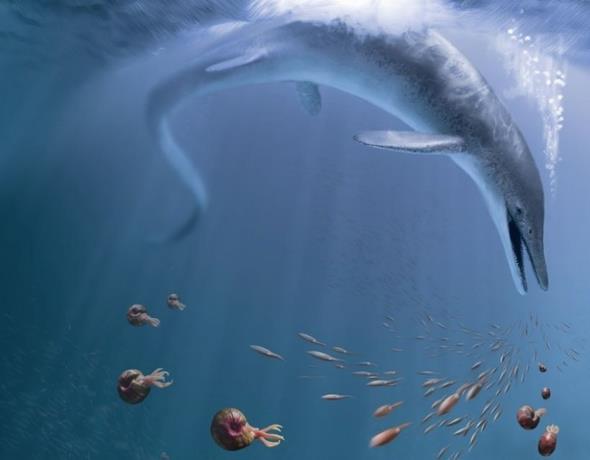The two-meter skull of the newly discovered giant ichthyosaur, the oldest known, sheds new light on the rapid development of the first marine reptiles.
When dinosaurs ruled the land, ichthyosaurs and other aquatic reptiles (they were not dinosaurs) ruled the waves, reaching equally enormous sizes and species diversity. With evolving fins and hydrodynamic body shapes found in both fish and whales, ichthyosaurs swam across the ancient oceans throughout the age of dinosaurs.
The Fossil Hill Member in the Augusta Mountains of Nevada predates the Central Triassic (247.2-237 million years ago), with a well-preserved skull, spine, shoulder, and part of the forearm excavated. Marks the first case of Ichthyoser reaching epic proportions.
Like the 17-meter-long sperm whale, the newly named Cymbospondylus youngorum was the largest animal found on land or in the sea at the time. In fact, it is the first giant creature to live on Earth, according to researchers at the University of Bonn and researchers at the Dinosaur Institute at the Los Angeles County Museum of Natural History (NHM). .
In other Nevada mountain ranges, archaeologists have been recovering limestone, shale, and siltstone fossils from Fossil Hill members since 1902, which opens a window into the Triassic. The mountains connect our present with the ancient oceans and have produced a wide variety of ammonites, the shelled ancestors of modern cephalopods such as cutfish and octopuses and marine reptiles. All of these animal specimens are collectively known as the Fossil Hill fauna, and they are many c. Yangoramin represents prey and rivals.
C. Yangor sailed the seas about 246 million years ago, or about three million years after the first Igteos wet their paddles, and it was surprisingly short-lived to become that large. Long nose and conical teeth c. Yangoram is said to hunt squid and fish, but its size may also have preyed on small, young marine reptiles.
The giant hunter probably had some fierce competition. Using a sophisticated computational model, the authors explored the energy that runs through the food web of fossil mountain animals, recreating the ancient environment through data, and discovering that seafood nets can still support some large carnivorous ichthyosaurs.
Ichthyosaurs with different sizes and survival techniques have proliferated from relatively small dolphins to modern cetaceans ranging from filter-feeding baleen whales to giant squid-hunting sperm whales.



:quality(85)/cloudfront-us-east-1.images.arcpublishing.com/infobae/PRZFPXNQLJCQ5GIV4HFUAL7A2Y.jpg)
:quality(85)/cloudfront-us-east-1.images.arcpublishing.com/infobae/Z3MJ3ZNWSVDIBDDBSLX7TZMLJI.jpeg)
